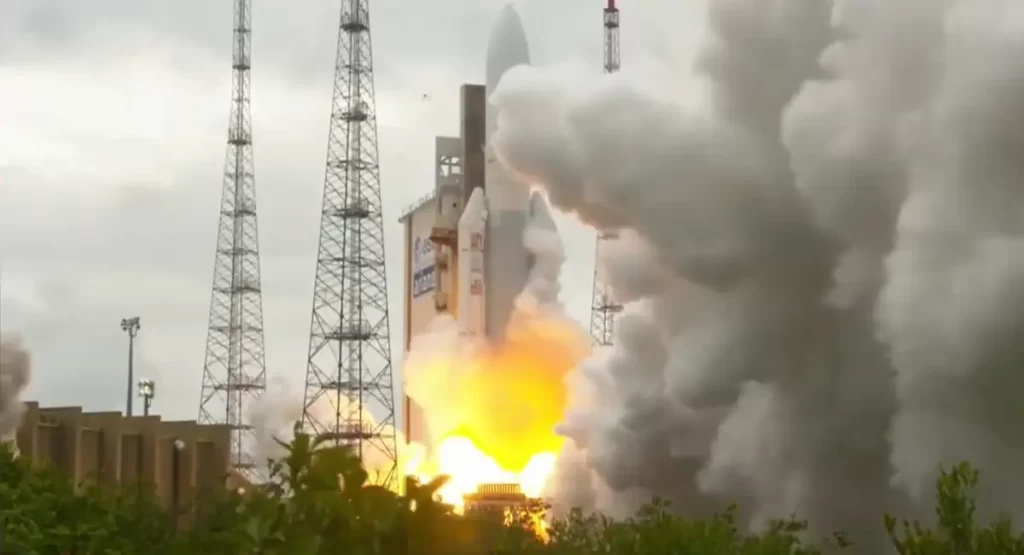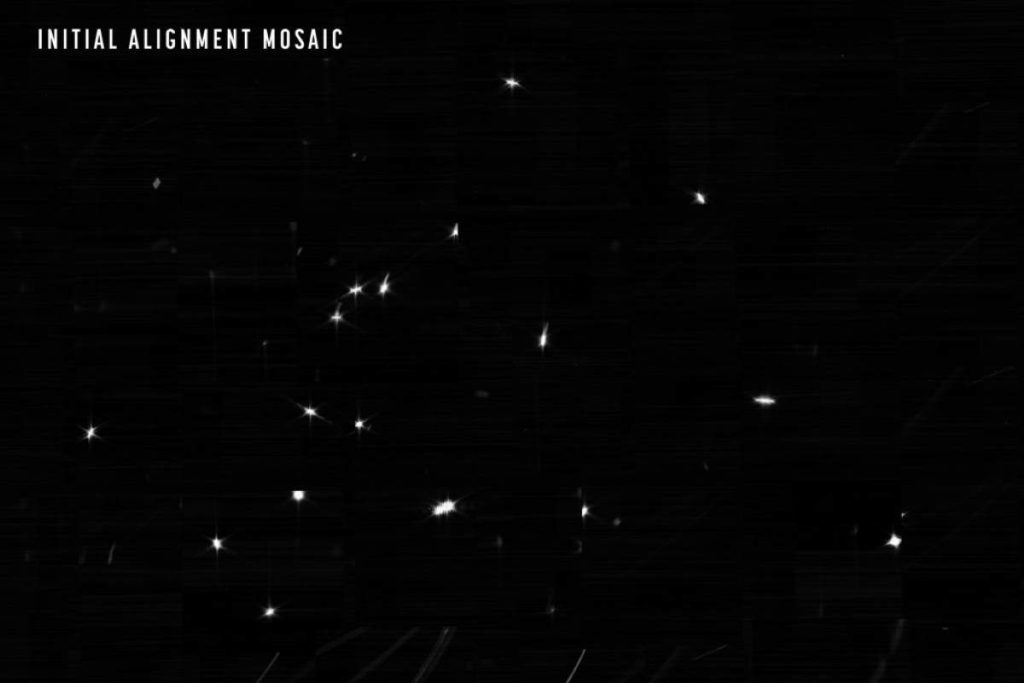Here is the full-HD video of the James Webb Space Telescope launch (JWST). An Ariane 5 launch vehicle (see notes 1)(Ariane Flight VA256) launched the James Webb Space Telescope from Ariane Launch Complex No. 3 (ELA 3) at Guiana Space Centre in Kourou, French Guiana, on December 25, 2021, at 12:20 UTC (09:20 local time, 07:20 EST, 13:20 CET).
James Webb Space Telescope Launch: Separation
The James Webb Space Telescope was successfully deployed into the intended orbit approximately 28 minutes after the launch. Here’s the video of the separation stage below.
James Webb Space Telescope
The James Webb Space Telescope (sometimes called JWST or simply Webb) is a large infrared telescope (see notes 2) with a 6.5-meter (21.3255 feet) primary mirror. Intended as the successor to the Hubble Space Telescope, JWST was funded by three space agencies: NASA, ESA, CSA. The JWST will be 100 times more powerful than the current best telescopes and will incorporate improved and different technologies to capture 70% more light.
Development began in 1996 for a launch that was initially planned for 2007 and a US$500 million budget. The project had numerous delays and cost overruns, including a major redesign in 2005.
Construction was finally completed in late 2016. Then an extensive testing phase began until a few weeks before the launch.

Why infrared astronomy and James Webb Space Telescope is so important?
Many of the objects scientists want to observe in space are far too cold to radiate at optical or shorter wavelengths, but radiate strongly in infrared, for example, the cold atoms and molecules that drift in interstellar space. We need to study these raw materials to understand how stars form and evolve.
“By observing in the infrared we can study how things get formed, the very early steps, because formation processes very often happen in cool and dusty places,” explains Göran Pilbratt, ESA’s Herschel Project Scientist.
So, the James Webb Space Telescope will be a giant leap forward in our quest to understand the Universe and our origins. JWST will examine every phase of cosmic history: from the first luminous glows after the Big Bang to the formation of galaxies, stars, and planets to the evolution of our own solar system. The science goals for the Webb can be grouped into four themes:
- The End of the Dark Ages (of the Universe): First Light and Reionization – JWST will be a powerful time machine with infrared vision that will peer back over 13.5 billion years to see the first stars and galaxies forming out of the darkness of the early universe.
- Assembly of Galaxies: JWST’s unprecedented infrared sensitivity will help astronomers to compare the faintest, earliest galaxies to today’s grand spirals and ellipticals, helping us to understand how galaxies assemble over billions of years.
- The Birth of Stars and Protoplanetary Systems: JWST will be able to see right through and into massive clouds of dust that are opaque to visible-light observatories like Hubble, where stars and planetary systems are being born.
- Planetary Systems and the Origins of Life: JWST will tell us more about the atmospheres of extrasolar planets, and perhaps even find the building blocks of life elsewhere in the universe. In addition to other planetary systems, JWST will also study objects within our own Solar System.

Where is James Webb Space Telescope now?
The telescope was confirmed to be receiving power and is currently en route to its target destination. NASA also has a web page that shows where is the James Webb Web Telescope now.
Notes
- Ariane 5 is a European heavy-lift space launch vehicle designed to deliver payloads into geostationary transfer orbit (GTO) or low Earth orbit (LEO). It is developed and operated by Arianespace for the European Space Agency (ESA). It is capable of carry payloads weighing more than 10 metric tons to geostationary transfer orbit (GTO) and over 20 metric tons into low-Earth orbit (LEO) – with a high degree of accuracy.
- JWST is designed primarily for near-infrared astronomy, but can also see orange and red visible light, as well as the mid-infrared region. Began in the 1830s, the infrared astronomy is a sub-discipline of astronomy which specializes in the observation and analysis of astronomical objects using infrared (IR) radiation.
Sources
- James Webb Space Telescope (JWST) mission official page on the NASA website
- James Webb Space Telescope on Wikipedia
- Ariane 5 Heavy Launch Vehicle on the Arianespace website
- Ariane 5 on Wikipedia
- James Webb Space Telescope blog on the NASA website
- “Why infrared astronomy is a hot topic” on the European Space Agency website
- Moon Landings: All-Time List [1966-2025] - February 2, 2025
- What Is Max-Q and Why Is It Important During Rocket Launches? - January 16, 2025
- Top 10 Tallest Rockets Ever Launched [2025 Update] - January 16, 2025


